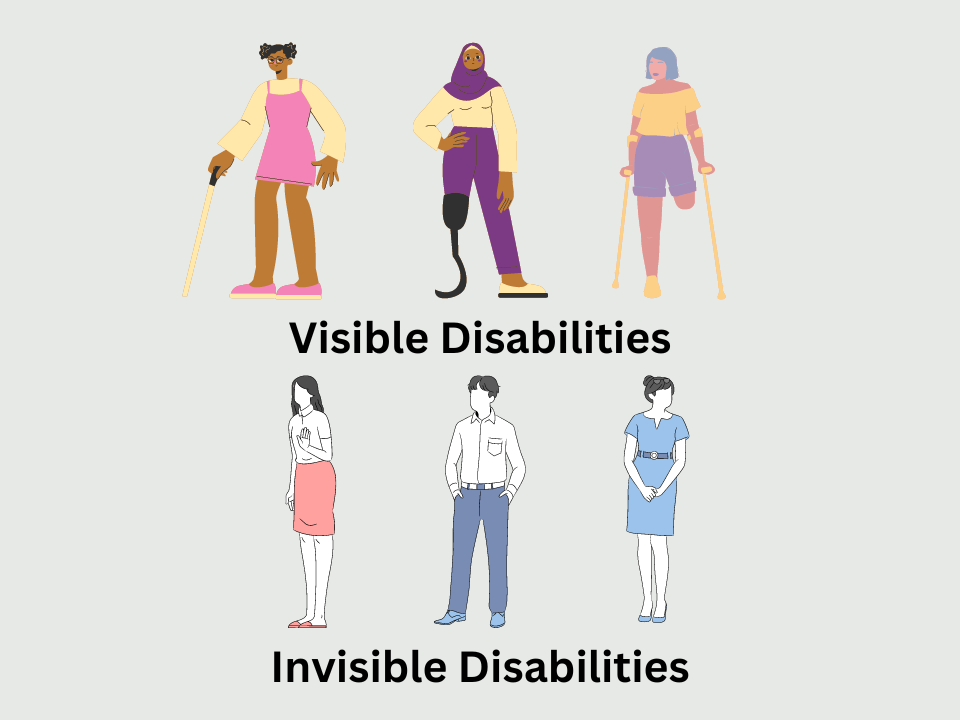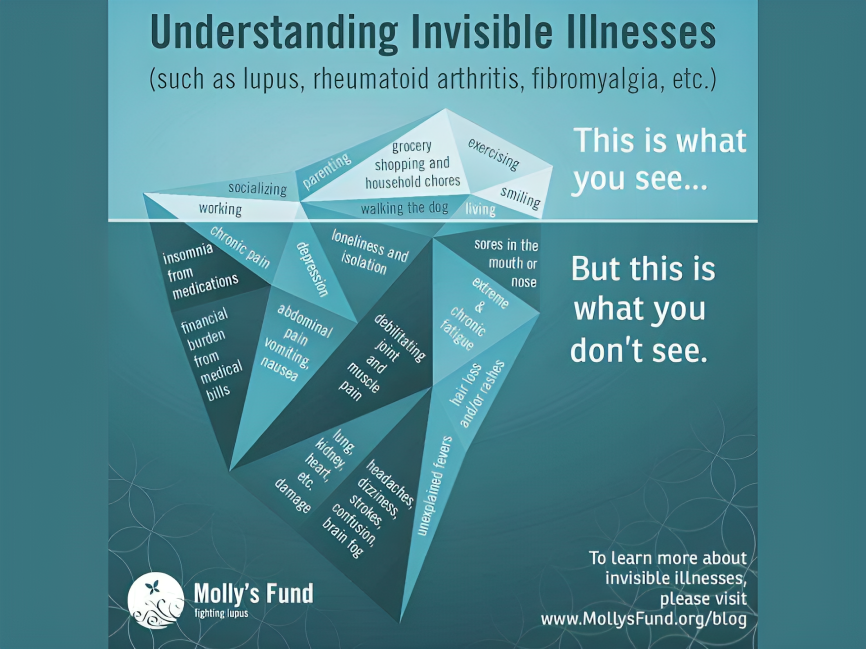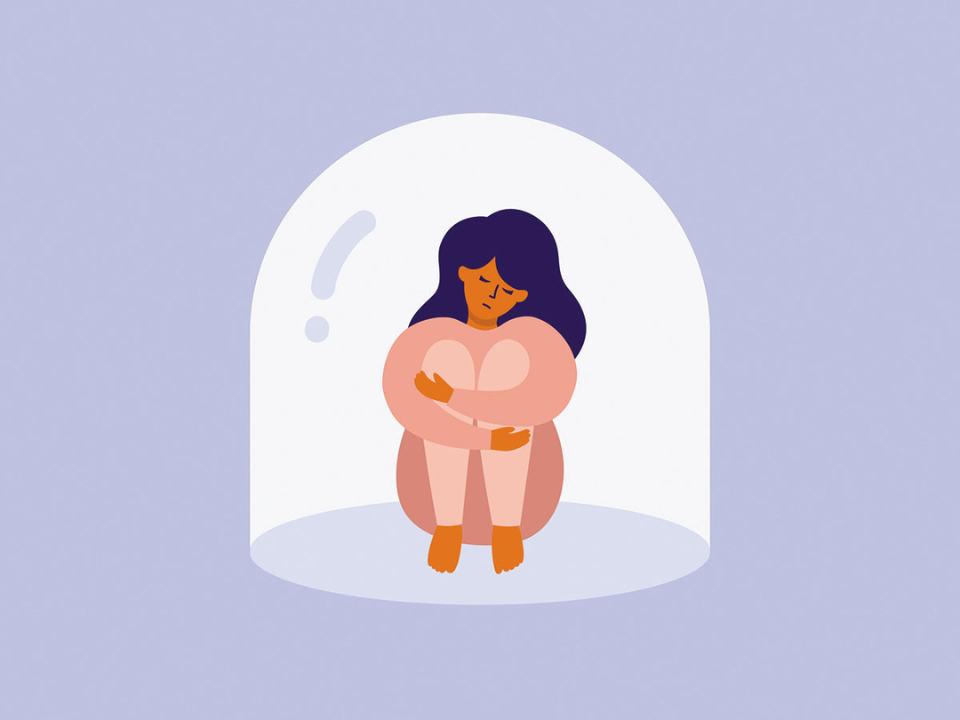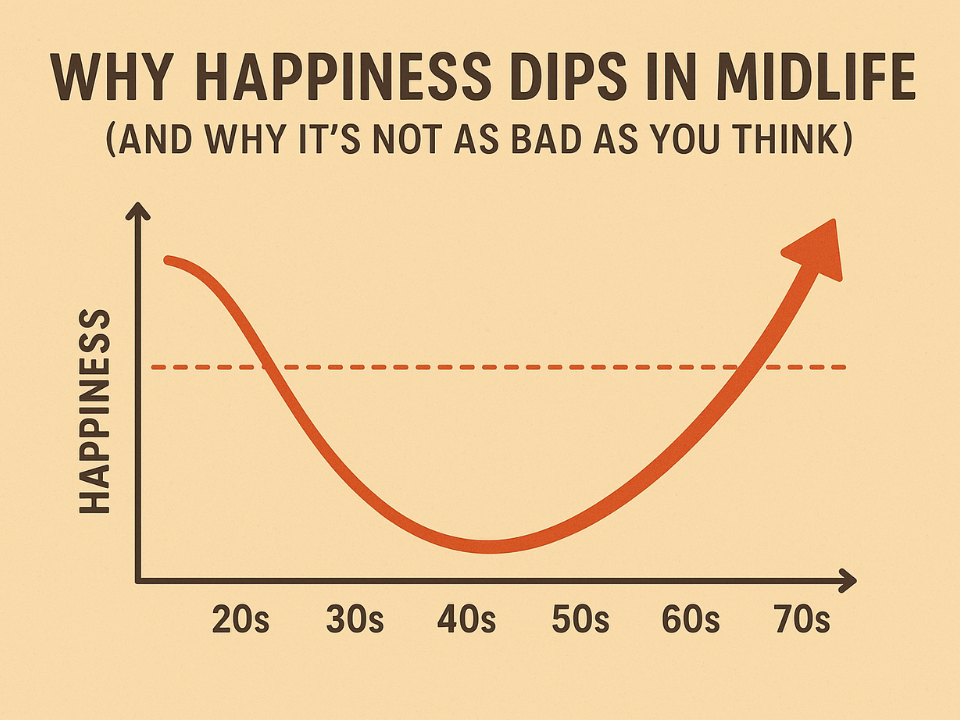
Imagine feeling unwell every day but people around you assume you are perfectly healthy. This is the reality for many Malaysians with invisible disabilities—chronic conditions that aren’t immediately visible but deeply affect one’s life. But there’s more than meets the eye, and understanding their struggle navigating an illness can help us treat them better.
What is an Invisible Disability?

Image via In The Lupus.org
Invisible disabilities cover a range of conditions, including autoimmune disorders, chronic pain, mental health issues, and neurological diseases. These conditions lack obvious physical symptoms, making them hard for others to recognize or understand. Yet, the impact on those affected is significant and life-changing.
Understanding Invisible Disability

Image via Harvard Health
Meet Alia, a 32-year-old accountant from Kuala Lumpur. Every day, she boards the LRT to get to work, often sitting in the OKU-priority seat. On the outside, Alia appears to be the picture of health—no cane, no wheelchair, just another commuter in the crowd. But beneath the surface lies a daily struggle that others can’t see. Alia lives with fibromyalgia, an invisible disability that brings constant pain, overwhelming fatigue, and mental fog.
Despite her invisible condition, Alia often faces judgment from others who assume she doesn’t need special accommodations. When the LRT is crowded, and seats are taken, she’s sometimes left standing because people can’t see her illness. This is the reality for many with invisible disabilities—facing the physical challenges of their condition while also dealing with the social stigma that comes from being misunderstood.
Alia’s story is a reminder that not all disabilities are visible, and understanding the lived experiences of those with invisible conditions is key to fostering a more empathetic and inclusive society.
Stigma as the Social Barrier
Living with an invisible disability often means facing more than just physical or emotional challenges—it also means dealing with the stigma that comes from having a condition others can’t see. This stigma can be incredibly isolating, as people may doubt or dismiss the reality of your experience simply because there are no visible signs. Whether it’s skepticism from colleagues, misunderstandings from friends, or a lack of empathy from others, the social barriers can be just as difficult to navigate as the condition itself.
Breaking down these barriers starts with education and a willingness to understand that just because you can’t see a disability doesn’t mean it isn’t real. It’s about fostering a culture of empathy and support, where every person’s experience is validated and respected.
It Starts with Awareness
Although it’s hard to know on the surface, invisible disabilities have a profound impact on their daily lives. By understanding the struggles that come with these conditions, we can be more compassionate and inclusive towards them. It starts with awareness, empathy, and recognizing that just because a disability isn’t visible, doesn’t mean it isn’t real. So let’s work together to make the invisible visible, so everyone feels seen, valued, and supported.










